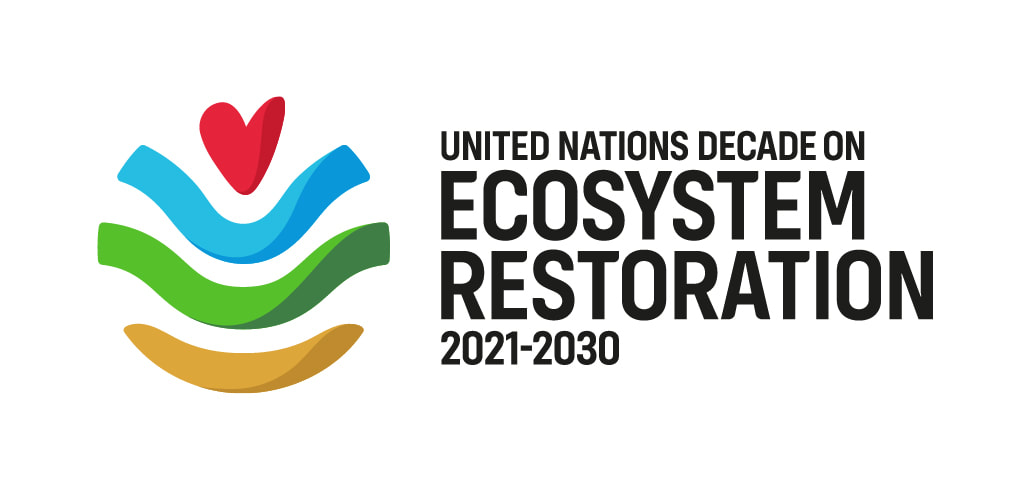LANDSCAPE RESILIENCE COUNCIL
TERMS OF REFERENCE
1. Purpose of the Landscape Resilience Council (Landscape Resilience Council or Council)
The purpose of the Council is to define Best Practice landscape restoration and management based on The Australian Landscape Science (Best Practice or TALS Approach) and to advise Practitioners and Government on its implementation, to support:
a. maximising farm productivity
b. restoring ecosystem biodiversity
c. rehydrating landscapes
d. managing erosion and salinity
e. stimulating rural economies
f. increasing rural employment
g. meeting Australia's international obligations for carbon reduction
2. Roles of the Council
The three main roles of the Council are:
2.1 Scientific Advisory
a. Collating, studying, defining, refining and reporting on The Australian Landscape Science (TALS);
b. Developing and refining principles and best landscape restoration and management practice based on TALS, such as the functions and unique efficiencies evolved by the Australian landscape over millions of years (Best Practice or TALS Approach). Note: The TALS Approach is a holistic, not reductionist, scientific approach;
c. Extending and assessing current Demonstrations by comparison to the evidence already available in the landscape, ie assessing current examples that conform to ancient efficiencies;
d. Considering the best results in current circumstances, as change evolves.
2.2 Practical Implementations Advisory
a. Inviting expert TALS Approach Landscape Practitioners to collaborate with the the Independent Scientists Panel so that the Panel can assess new installations and advise on Best Practice in the location;
b. Monitoring quality of Natural Infrastructure Implementations;
c. Creating Best Practice Landscape Restoration and Management solutions based on the TALS Approach to Landscape Restoration and Management;
d. Writing reports about Best Practice solutions for TALS Approach to Landscape Restoration and Management and making them publicly available;
e. Advising Government on Best Practice Landscape Restoration and Management;
f. Support developing and issuing TALS Certified certification across various aligned NGO groups and organisations, trainers and interested parties.
2.3 Policy Advisory
a. Advising Government Departments at all levels on Best Practice TALS Approach to Landscape Restoration and Management;
b. Making submissions to, and/or informing and/or drafting policy and funding guidelines for, Government Departments at all levels;
c. Advising Government Departments at all levels on how to best amend Statutes and Statutory Instruments, including outdated Regulations and Policies that are no longer in line with current science and international obligations, and to allow for efficient and effective installation of Natural Infrastructure, such as:
c.1 Reviewing provisions and definitions such as 'irrigation' and 'environmental flow' in the State and Territory Water Acts and Regulations - in light of Australia’s obligations under the Biodiversity Convention and the Climate Change Convention;
c.2 Reviewing State and Territory Biosecurity Acts and Biosecurity Regulations, with focus on plants’ functions and benefits, such as climate moderation, bioremediation and increase in biodiversity and fertility - in light of Australia’s obligations under the Biodiversity Convention and the Climate Change Convention.
3. Definitions
See DEFINITIONS.
4. Minimum Number of Members
a. The Council has a minimum of 3 members with a scientific background and/or practical on-the-ground Natural Infrastructure Implementation experience and a thorough understanding of The Australian Landscape Science (TALS).
b. There must be at least one member each with:
b.1 scientific expertise in the relevant field of investigation and a thorough understanding of The Australian Landscape Science (TALS); and
b.2 extensive practical on-the-ground Natural Infrastructure implementation experience based on the TALS Approach and a thorough understanding of The Australian Landscape Science (TALS).
c. It is optional to appoint one or more members with knowledge of landscape law and policy.
5. Nomination
a. Anyone can nominate a person to be a member of the Council by written communication to the Secretariat (info@tals.org.au for the time being).
b. A person can nominate himself or herself to be a Council member.
6. Appointment & Fees
a. Council members are appointed by the Secretariat (Appointor) on a pro bono/voluntary basis.
b. If funding becomes available, a contractor fee is envisaged for work completed that will be described in more detailed separate contractor agreements.
7. Duration of Appointment
a. Appointment is for the period of 1 year ending on 30 June, or the part of 1 year if appointed during the financial year.
b. A member can resign at any time by written notice to the Secretariat (info@tals.org.au for the time being).
c. A member can be re-appointed at the Annual General Meeting of TALS Institute.
8. Criteria for Appointment
When appointing a member to the Council, the Appointor must take into account the following criteria (not all of which must be met):
8.1 Scientific qualifications and experience to date
8.2 Extensive on-the-ground Natural Infrastructure implementation experience
a. In-the-field experience (observing and measuring of landscape data, such as temperatures, moisture and biodiversity);
b. Basic understanding of current laws, regulations and policies impacting on effective and efficient implementation of Natural Infrastructure;
c. Solid understanding of basic concepts and principles of The Australian Landscape Science, such as:
9. Conflict of Interest
A member of the Council must disclose any vested interest in the result or any other real or perceived conflict of interest to the Secretariat, and the Secretary is to enter such a disclosure of interest in the 'Disclosure of Interest' Register.
10. Meetings and processes
The Council may decide on their own meetings and other processes.
11. Secretariat
Administrative support is provided by the Secretariat as defined in the DEFINITIONS. The Secretariat's contact details are info@tals.org.au.
12. Governance: The Council is governed by the these Terms of Reference as amended from time to time by The Secretariat. All input is welcome. Email: info@tals.org.au.
The purpose of the Council is to define Best Practice landscape restoration and management based on The Australian Landscape Science (Best Practice or TALS Approach) and to advise Practitioners and Government on its implementation, to support:
a. maximising farm productivity
b. restoring ecosystem biodiversity
c. rehydrating landscapes
d. managing erosion and salinity
e. stimulating rural economies
f. increasing rural employment
g. meeting Australia's international obligations for carbon reduction
2. Roles of the Council
The three main roles of the Council are:
2.1 Scientific Advisory
a. Collating, studying, defining, refining and reporting on The Australian Landscape Science (TALS);
b. Developing and refining principles and best landscape restoration and management practice based on TALS, such as the functions and unique efficiencies evolved by the Australian landscape over millions of years (Best Practice or TALS Approach). Note: The TALS Approach is a holistic, not reductionist, scientific approach;
c. Extending and assessing current Demonstrations by comparison to the evidence already available in the landscape, ie assessing current examples that conform to ancient efficiencies;
d. Considering the best results in current circumstances, as change evolves.
2.2 Practical Implementations Advisory
a. Inviting expert TALS Approach Landscape Practitioners to collaborate with the the Independent Scientists Panel so that the Panel can assess new installations and advise on Best Practice in the location;
b. Monitoring quality of Natural Infrastructure Implementations;
c. Creating Best Practice Landscape Restoration and Management solutions based on the TALS Approach to Landscape Restoration and Management;
d. Writing reports about Best Practice solutions for TALS Approach to Landscape Restoration and Management and making them publicly available;
e. Advising Government on Best Practice Landscape Restoration and Management;
f. Support developing and issuing TALS Certified certification across various aligned NGO groups and organisations, trainers and interested parties.
2.3 Policy Advisory
a. Advising Government Departments at all levels on Best Practice TALS Approach to Landscape Restoration and Management;
b. Making submissions to, and/or informing and/or drafting policy and funding guidelines for, Government Departments at all levels;
c. Advising Government Departments at all levels on how to best amend Statutes and Statutory Instruments, including outdated Regulations and Policies that are no longer in line with current science and international obligations, and to allow for efficient and effective installation of Natural Infrastructure, such as:
c.1 Reviewing provisions and definitions such as 'irrigation' and 'environmental flow' in the State and Territory Water Acts and Regulations - in light of Australia’s obligations under the Biodiversity Convention and the Climate Change Convention;
c.2 Reviewing State and Territory Biosecurity Acts and Biosecurity Regulations, with focus on plants’ functions and benefits, such as climate moderation, bioremediation and increase in biodiversity and fertility - in light of Australia’s obligations under the Biodiversity Convention and the Climate Change Convention.
3. Definitions
See DEFINITIONS.
4. Minimum Number of Members
a. The Council has a minimum of 3 members with a scientific background and/or practical on-the-ground Natural Infrastructure Implementation experience and a thorough understanding of The Australian Landscape Science (TALS).
b. There must be at least one member each with:
b.1 scientific expertise in the relevant field of investigation and a thorough understanding of The Australian Landscape Science (TALS); and
b.2 extensive practical on-the-ground Natural Infrastructure implementation experience based on the TALS Approach and a thorough understanding of The Australian Landscape Science (TALS).
c. It is optional to appoint one or more members with knowledge of landscape law and policy.
5. Nomination
a. Anyone can nominate a person to be a member of the Council by written communication to the Secretariat (info@tals.org.au for the time being).
b. A person can nominate himself or herself to be a Council member.
6. Appointment & Fees
a. Council members are appointed by the Secretariat (Appointor) on a pro bono/voluntary basis.
b. If funding becomes available, a contractor fee is envisaged for work completed that will be described in more detailed separate contractor agreements.
7. Duration of Appointment
a. Appointment is for the period of 1 year ending on 30 June, or the part of 1 year if appointed during the financial year.
b. A member can resign at any time by written notice to the Secretariat (info@tals.org.au for the time being).
c. A member can be re-appointed at the Annual General Meeting of TALS Institute.
8. Criteria for Appointment
When appointing a member to the Council, the Appointor must take into account the following criteria (not all of which must be met):
8.1 Scientific qualifications and experience to date
8.2 Extensive on-the-ground Natural Infrastructure implementation experience
a. In-the-field experience (observing and measuring of landscape data, such as temperatures, moisture and biodiversity);
b. Basic understanding of current laws, regulations and policies impacting on effective and efficient implementation of Natural Infrastructure;
c. Solid understanding of basic concepts and principles of The Australian Landscape Science, such as:
- How Australia’s landscape functions in general;
- How Australia’s waterways are relevant for proper functioning of floodplains;
- How floodplains function;
- How plants and water can be used to make landscapes drought-resilience;
- Creek and river restoration based on the TALS Approach: How Natural Infrastructure, such as Leaky Weirs, Contour Banks and plants work;
- Natural flow of water ways;
- Photosynthesis;
- Stepped Diffusion Broad Acre Hydroponics;
- The various of functions of plants, such as natural air-conditioning, natural pump, water storage, nutrient pump, mulch provider, stabiliser of river banks and land in general, carbon capture, oxygen producer;
- How water tables can be used to our advantage if properly managed;
- How salinity occurs and is distributed in the landscape;
- How a salinity outbreak can be avoided and remedied, without lowering the water table;
- Basic weather science: cloud formation, condensation, dew as atmospheric moisture;
- Small water cycle;
- Large water cycle, including the Biotic Pump Theory;
- The benefits of evapotranspiration;
- How erosion works, inc erosion of landscapes to the sea;
- Hydrology as the environmental production line;
- How to decrease water's energy;
- Biodiversity and its connection to health;
- Biodiversity on the ground and in the soil;
- Effective bushfire mitigation without back-burning;
- Cooling effect of different plant species;
- Hydration of landscapes.
9. Conflict of Interest
A member of the Council must disclose any vested interest in the result or any other real or perceived conflict of interest to the Secretariat, and the Secretary is to enter such a disclosure of interest in the 'Disclosure of Interest' Register.
10. Meetings and processes
The Council may decide on their own meetings and other processes.
11. Secretariat
Administrative support is provided by the Secretariat as defined in the DEFINITIONS. The Secretariat's contact details are info@tals.org.au.
12. Governance: The Council is governed by the these Terms of Reference as amended from time to time by The Secretariat. All input is welcome. Email: info@tals.org.au.




